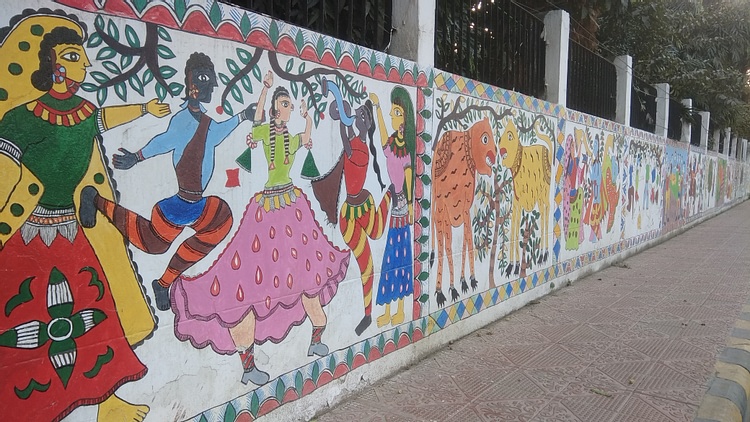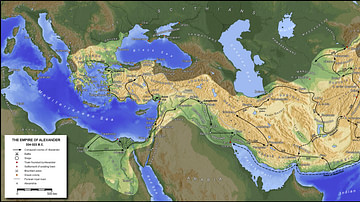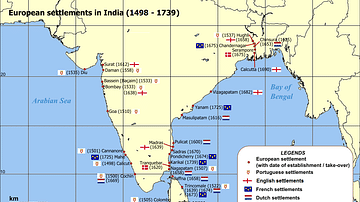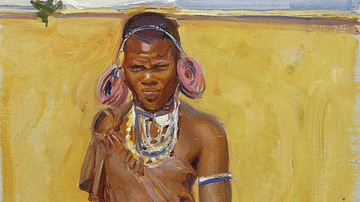Mithila, a region in the state of Bihar, northern India (and also stretching into Nepal), has an important tradition of knowledge in the form of paintings. Madhubani paintings (also known as Mithila paintings) have been practised by the women of the region through the centuries and today it is considered as a living tradition of Mithila. The art not only depicts the social structure but also the cultural identity of the land with its depictions on themes of religion, love and fertility.
Madhubani paintings are among the most famous paintings in the world. This popular art of the Mithila region expresses the creativity and sensitivity of its people. Like any folk art, it also shows the psychology of the society to which it belongs; it reflects the morals, values and customs of the region in a very interesting way. This age-old art is achieved by the use of fingers, twigs, brushes, nib-pens, and matchsticks, using natural dyes and pigments, and is characterized by eye-catching geometrical patterns. These paintings are predominantly made by the women of the Mithila region and thus it signifies a great deal in a male-dominated society.
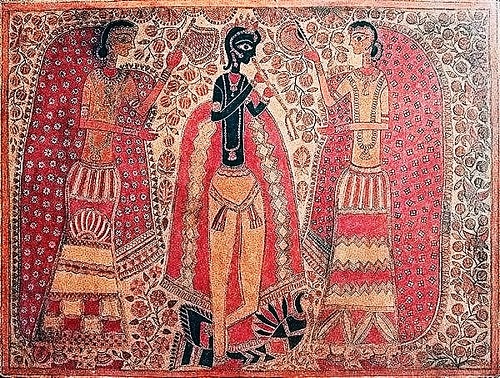
Name & Origins
The art of Madhubani paintings is a traditional fashion of paintings developed in the Mithila region, in the villages of Jitwarpur and Ranti, near the city of Madhubani. Literally, the word Madhubani means "honey forest".
The origins of Madhubani paintings are quite unknown. However, it is believed that King Janak, ruler of Mithila Kingdom in the 8th or 7th century BCE, had asked to develop these paintings in order to capture the moments of his daughter Sita's wedding to Prince Rama (of the Hindu epic – Ramayana).
The paintings are the exclusive monopoly of artists and their knowledge has been passed from generation to generation, from mothers to daughters. Girls learn to play with a brush and with colours from childhood. The culminating moment is the decoration of the kohbar - the room of the house where the new couple lives after their wedding. Although the paintings are traditionally made by women, men are becoming more and more involved in order to meet market demand. Also, the traditional process of making this art has been modified. The painting is traditionally done by hand, on a plastered wall or on a mud wall, but now the commercial demand is bringing the paintings to paper and clothes.
Themes & Colours
Essentially, the paintings are of religious motives. The central theme of all paintings is love and fertility. They are made in special rooms in the house, as in the room for prayer, the ritual area, the bridal room, or the main walls of the village to welcome visitors, etc. The drawings of nature and mythology are adapted and versioned according to the style of each region, as well as the individual artist. The most-painted themes and designs are the worshipping of Hindu deities and episodes of their sacred writings, such as the episode of Radha and Krishna, Rama, Shiva, Ganesha, Laxmi, Saraswati, the monkey, the sun, the moon, the plant of Tulasi, the Deep (it is a traditional lamp – made of soil, a symbol of a happy life), wedding scenes and other social events.
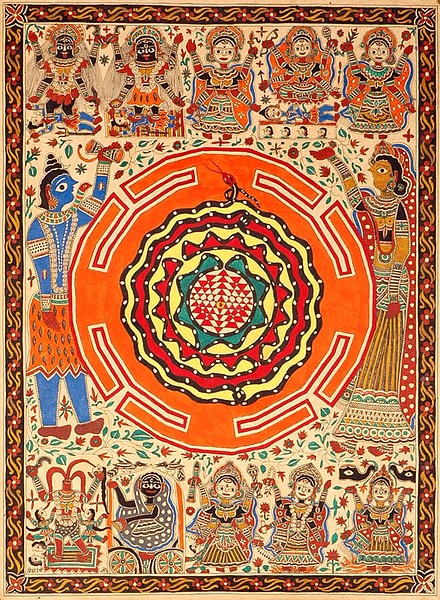
Before starting the painting, women usually do a prayer to the deities so that their favour accompanies them in their objectives or rituals. For its elaboration, the cotton wrapped on a bamboo stick is used as a brush. The colours that are applied are prepared manually by the artists. The black colour is prepared by mixing blight with cow dung; yellow is prepared based on turmeric and Banyan leaf milk; blue is extracted from indigo; the red of the Kusum flower; the green leaf of the applewood tree; the white of rice powder; and orange of the Palash flower.
The main exponents of Madhubani paintings are the Maithil Brahmin style and the Kayasthas style, characteristics of the villages of Jitwarpur and Ranti, very close to the city of Madhubani. There, Madhubani paintings have become a centre of commercial activity. Every day, you can see young people busy in arranging and making the papers by hand and looking for the colours.
The uniqueness of this art form is selectiveness in its artistic expression. In antiquity, this art was made on mud-walls or soil-ground on certain auspicious occasions and was erased the very next day. And this is why there has been no preservation of these works. In a sense, the artworks were natural and momentary. Nevertheless, this popular art used to pass easily from one generation to another without the help of any technical tools. The very nature of such transformation of knowledge from one generation to another led to its expansion based on experiment and creativity.
The artworks on mud-walls were not a symbolic depiction of the stories of the epics; rather they were directly related to, and a true representation of, Hindu mythology. The incessancy of this art was due to the natural and live depiction of social life in which there was a strong interconnectedness among the people. The use of colours also had strong connections with the religious beliefs and hope of their well-being. Some art scholars also suggest that Madhubani Paintings were associated with the tantric culture of ancient India, though this notion is still debated among art historians. The Mithila region has been a centre of tantric practices for both the Saiva and Sakti communities. Historical references to the tantric connection of Madhubani Painting are found in the literary work of the poet Vidyapati who belonged to the 12th century CE.
Though the origin of this art form dates back to Ramayana period (ancient India) as the popular oral tradition suggests, it went through various phases of history during the medieval period and very little history is known of this period. Nevertheless, it was W.G. Archer, a British collector of this region (during the British colonial period of India) who was greatly attracted to this art and he named it Mithila Art in the 1940s CE.
Modern Madhubani Paintings
The commercialization of Madhubani paintings began in 1962 CE, when a foreign artist travelling through this town was attracted by the murals. He persuaded women to paint those same drawings on paper, so that he could take them and show them in his country. The idea was a great success and thus began the commercialization of Madhubani paintings. Since then, the way of painting has diversified in different ways.
Mithila paintings or Madhubani paintings will endure as an internationally acclaimed form of painting. Madhubani paintings continue to primarily depict the nature and the Hindu mythological figures and the themes are generally associated with Hindu deities, fish, birds, animals, natural objects like the sun, moon and religious plants like Tulsi (a sacred plant in Hindu mythology) or Banyan tree. Besides these central objects of the artwork, scenes from the royal court and social events like weddings are also widely painted. Madhubani Paintings have traditionally two forms: Bhittichitra (paintings made on a mud-wall) and Aripana (on the ground-soil). Bhittichitra is made on the mud-walls of the houses specifically at three places: the room of the family God/Goddess, the room of the newly wedded couple and the drawing-room. Paintings are also drawn on the walls of these rooms on some auspicious occasions like marriage, Upnayana and festivities like Dussehra and Diwali.
The women of the Mithila region, who are extraordinarily talented in this art form, have made their art a subject of artistic attraction across geographical boundaries. Finding out the artistic excellence of these paintings in the 1960s CE, some government officials took the initiative to popularise the art in order to uplift their financial earnings. They did this by persuading women artists to draw similar paintings on paper, which eventually led to the concept of commercialisation of their work for a worldwide market.
The recent initiatives taken by the local government, NGOs and cultural organisations, have brought the Madhubani art to an even greater level of popularity and recognition. In the field of fashion, many designers have launched Madhubani designs collection such as traditional outfits (Stoles, Sarees, Salwar kameez, long skirts, etc.) which are beautifully designed in Madhubani art. Many other day-to-day useable products like pen-cases, bags, diaries, etc. are painted in Mithila art and are very popular.
In recent times, digital technology has changed not only how we know, but also what we deem worth knowing. Special-interest tourism is a fast-growing and highly lucrative alternative to traditional mass-market travel. As motives for travel diversify, so do the number of subsectors. Moreover, tourism today is one of the most dynamic and diversified socio-economic activities globally, capable of turning an unnoticed region into a prosperous one by generating employment opportunities for the local people as well giving due importance the local cultural heritage. Madhubani paintings of the Mithila region have great potential along with the other cultural resources of the region to attract foreign tourists.
Art-loving tourists from across the world have taken a keen interest in the rural tourism and heritage of India and Madhubani paintings have scaled new heights beyond the boundaries of Mithila. Madhubani painting enjoys an international popularity, especially in countries like Japan, Germany, France and the USA. The Mithila Museum in Tokamachi, Japan, founded by a famous Madhubani art lover, Hashegawa exhibits around 1000 Madhubani paintings of various themes and styles. Several books and research papers have been written on various aspects of Madhubani painting by Indian and foreign writers alike. The Master Craftsmen Association of Mithila, founded by an American in 1977 CE, helps the artists of Madhubani with the sale of their works through exhibitions. Very recently, all the governemnt buildings of the Madhubani city, including the railway station, town hall, administrative office buildings, and government bungalows, etc. have been thoroughly covered by Madhubani paintings. A number of long-distance trains (coaches) of India have been completely turned into artistic works showing Madhubani paintings. With such efforts on the part of government and local artists, Madhubani paintings are once again emerging as a major art form on the artistic canvass of the modern world.
This article was submitted as part of Ancient History Encyclopedia's UNESCO Summer School scholarship programme.
